Have you ever conducted a search on Google and noticed that for each result, there’s a title and a description? That description is called a meta description.
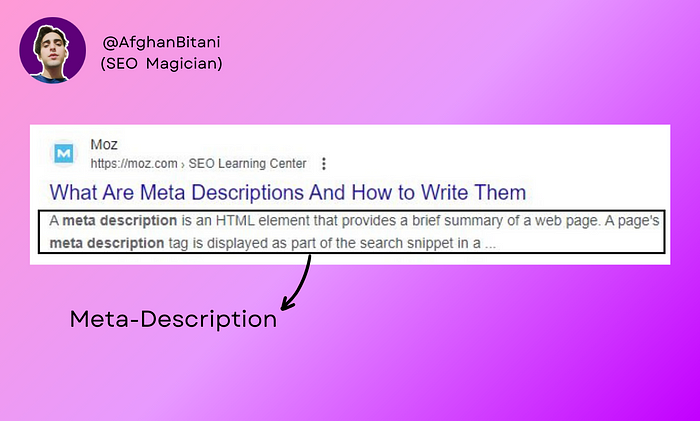
Usually, a website creates one for each page, but sometimes they don’t. Search engines can use yours if you provide one, or they can create their own if you don’t.
Table of Contents
- What Makes an Ideal Meta Description?
- How to Create a Perfect Meta Description
- The Importance of Having a Meta Description
What Makes an Ideal Meta Description?
I am about to give you a quick summary of what you are going to read. It’s just for your brainstorming so that you remember what you are going to read till the end.
Creating an ideal meta description involves avoiding keyword stuffing, using unique descriptions for each page, and not merely summarizing the content. Google prefers meta descriptions that provide a concise yet informative overview, without just listing keywords. It’s also important to make each description unique, as identical meta descriptions across multiple pages can hinder Google’s understanding of the distinct content on your site. Furthermore, a compelling description should go beyond a simple summary, offering a clear and engaging glimpse into what the page offers. Keeping the description concise but informative, typically around 119 to 135 characters, helps in providing enough information without overwhelming the reader. By adhering to these guidelines, you can create meta descriptions that not only align with Google’s preferences but also attract more clicks from users.
So, Let’s start with the steps!
1. Avoid Keyword Stuffing:
First, Google doesn’t want you to just list keywords in your meta description. Here’s an example of what Google dislikes: just listing tons of different keywords. That’s not what they prefer.
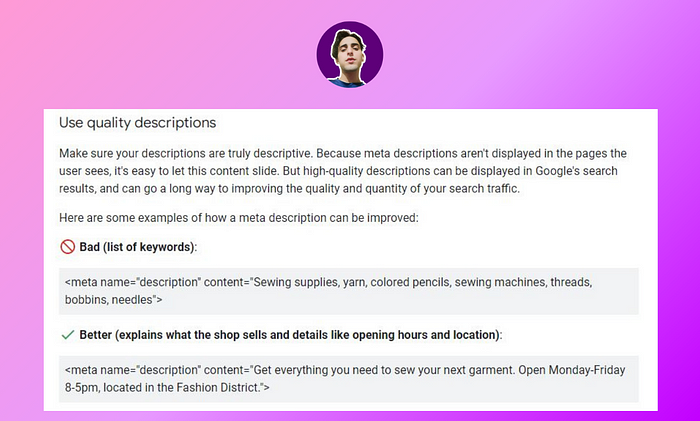
2. Unique Meta Descriptions for Each Page:
Second, avoid using the same meta description on each page. If you use the same description on every page, it doesn’t help Google understand how one page is different from another.
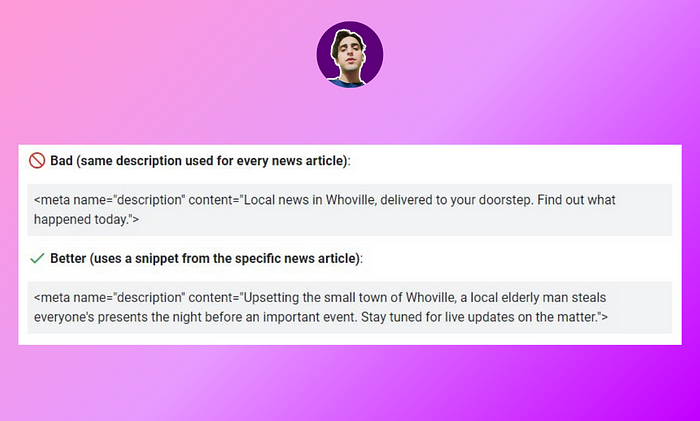
3. Don’t Just Summarize the Page:
Third, don’t merely summarize the page. A simple summary doesn’t provide much value. Google can figure that out on its own; you need to make it more compelling.
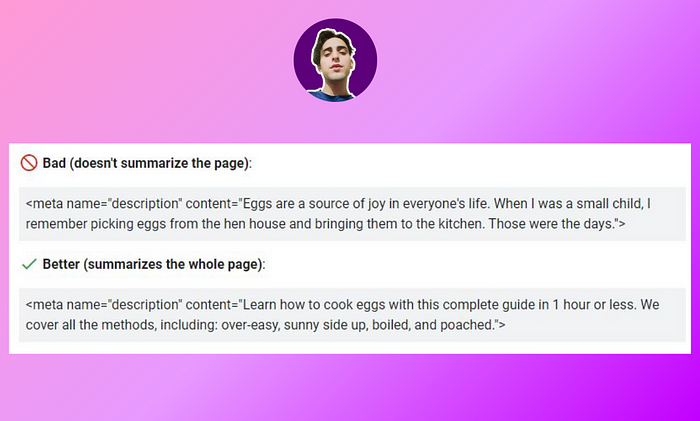
4. Keep It Concise but Informative:
Fourth, don’t make your meta description too short. A short meta description may not give enough information about what the user will find on the page, potentially decreasing clicks.
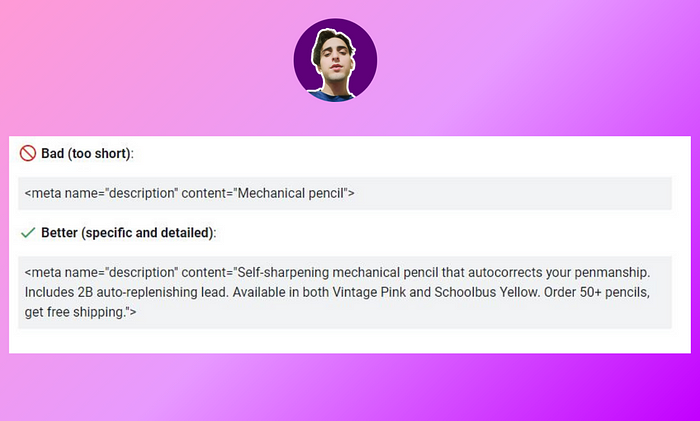
How to Create a Perfect Meta Description
Even though following Google’s guidelines can help, it doesn’t guarantee success. To truly stand out, consider these additional tips:
Optimal Length
Meta descriptions that are roughly 119 to 135 characters long can result in a 3.4% higher click-through rate. Descriptions that are too long or too short don’t get as many clicks.
Include Exact Search Queries
Including the exact query someone is searching for in your meta description can increase click-throughs by up to 5.7%. For example, if a user searches for “home workouts,” and your title, description, and URL all highlight “effective home workouts,” it helps capture attention.
Use Power Words
Incorporating power words can boost click-throughs by approximately 2.18%. Words like “effortless” can make your description more enticing, such as “Check out these seven effortless ways to boost your rankings.”
Evoke Emotions
Meta descriptions that evoke emotions can achieve a 2% to 3% higher click-through rate compared to those that don’t. Emotional appeal can draw users in and encourage them to click.
The Importance of Having a Meta Description
Even if you add a meta description versus not having one at all, websites with their own meta descriptions get roughly a 5.8% higher click-through rate. This makes it crucial to create a meta description for every page on your site.
While the percentage gains may seem small, every little bit adds up. Implementing these tactics can make a significant difference in your search rankings and click-through rates.
What is a meta description in SEO?
A meta description is a brief summary of a webpage’s content, typically displayed below the page’s title in search engine results. It helps users understand what the page is about and can influence click-through rates.
How long should a meta description be?
Ideally, a meta description should be between 150-160 characters. This length ensures that the entire description is visible in search engine results without being truncated.
Does the meta description affect SEO?
While meta descriptions do not directly impact search rankings, they can significantly affect click-through rates. A well-crafted meta description can attract more clicks, indirectly boosting a page’s SEO performance.
Can I use the same meta description for multiple pages?
No, it is best to create unique meta descriptions for each page. Using the same description across multiple pages can confuse search engines and users, making it harder to differentiate the content.
What are power words in meta descriptions?
Power words are emotionally charged words or phrases that can grab a user’s attention and encourage clicks. Examples include “amazing,” “effortless,” “exclusive,” and “guaranteed.” Using these words in meta descriptions can make them more compelling.
If you want to read; how to how to write a perfect blog post? Click here!
Pingback: How Many Blog Posts Per Month Are Enough To Rank On Google?
Pingback: How To Optimize SEO Blog Posts? 8 Easy Steps.